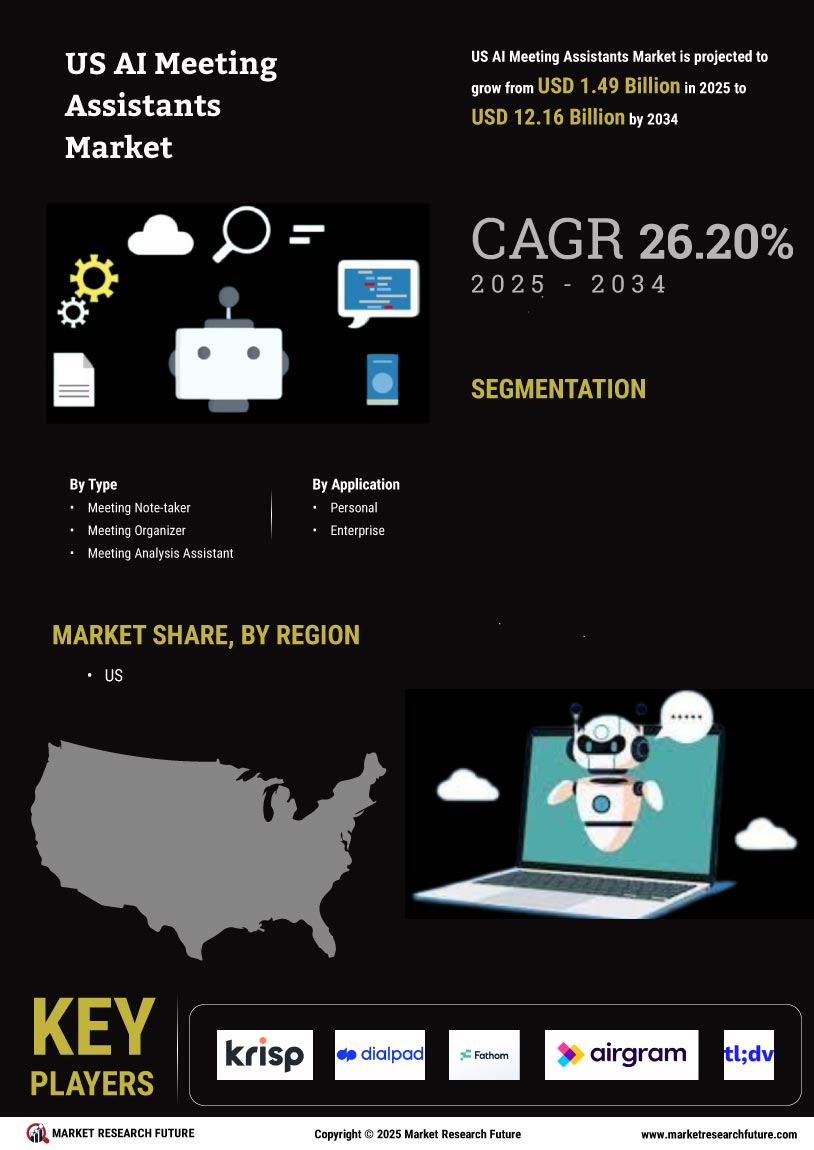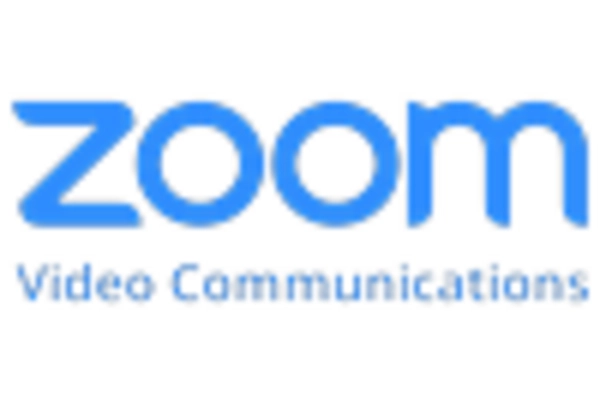The ai meeting-assistants market is currently characterized by a dynamic competitive landscape, driven by rapid technological advancements and an increasing demand for efficient collaboration tools. Major players such as Microsoft (US), Google (US), and Zoom Video Communications (US) are at the forefront, each adopting distinct strategies to enhance their market positioning. Microsoft (US) focuses on integrating its meeting assistant capabilities within its broader suite of productivity tools, thereby leveraging its existing user base. Google (US), on the other hand, emphasizes innovation through AI-driven features in its Google Meet platform, aiming to streamline user experience. Zoom Video Communications (US) continues to expand its functionalities, particularly in enhancing virtual meeting experiences, which positions it as a leader in user engagement. Collectively, these strategies contribute to a competitive environment that is increasingly centered around user-centric innovations and seamless integrations.
In terms of business tactics, companies are increasingly localizing their operations and optimizing supply chains to enhance service delivery. The market structure appears moderately fragmented, with a mix of established players and emerging startups. This fragmentation allows for diverse offerings, yet the influence of key players remains substantial, as they set benchmarks for quality and innovation that smaller companies strive to meet.
In October 2025, Microsoft (US) announced a significant upgrade to its Teams platform, incorporating advanced AI features that enhance real-time transcription and meeting summarization. This strategic move not only reinforces Microsoft’s commitment to improving user productivity but also positions it to capture a larger share of the market by appealing to organizations seeking comprehensive solutions for remote collaboration. The integration of these features is likely to enhance user satisfaction and retention, thereby solidifying Microsoft’s competitive edge.
In September 2025, Google (US) unveiled a new AI-driven feature for Google Meet that allows for automatic language translation during meetings. This innovation is particularly strategic as it addresses the growing need for global collaboration, enabling users from different linguistic backgrounds to communicate effectively. By enhancing accessibility, Google (US) not only broadens its user base but also strengthens its position in the market as a leader in inclusive technology.
In August 2025, Zoom Video Communications (US) launched a partnership with Otter.ai (US) to integrate advanced transcription services into its platform. This collaboration is indicative of a trend towards strategic alliances that enhance product offerings. By combining Zoom’s robust video conferencing capabilities with Otter.ai’s transcription technology, the partnership aims to provide users with a more comprehensive meeting experience, thereby increasing user engagement and satisfaction.
As of November 2025, the competitive trends in the ai meeting-assistants market are increasingly defined by digitalization, sustainability, and the integration of AI technologies. Strategic alliances are becoming a pivotal aspect of the landscape, as companies seek to enhance their offerings through collaboration. Looking ahead, it appears that competitive differentiation will increasingly pivot from price-based strategies to a focus on innovation, technological advancements, and supply chain reliability. This shift suggests that companies that prioritize these areas may be better positioned to thrive in an evolving market.

















Leave a Comment